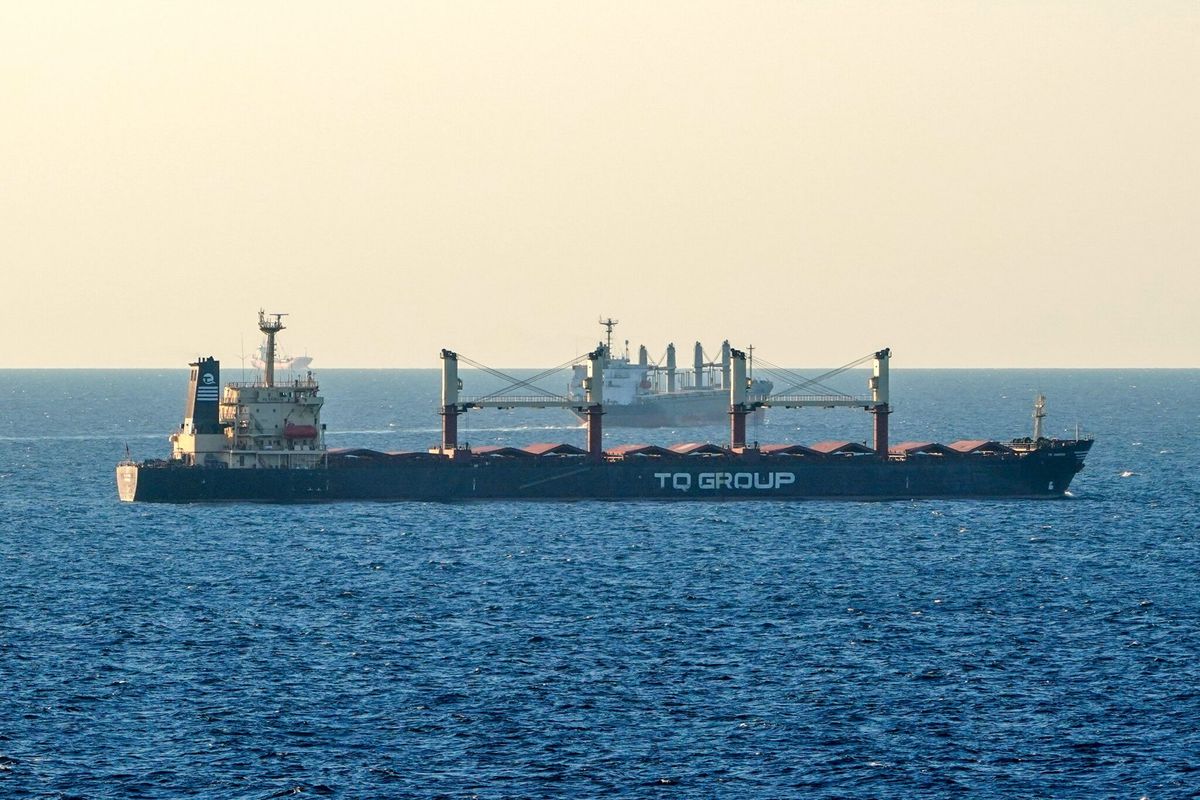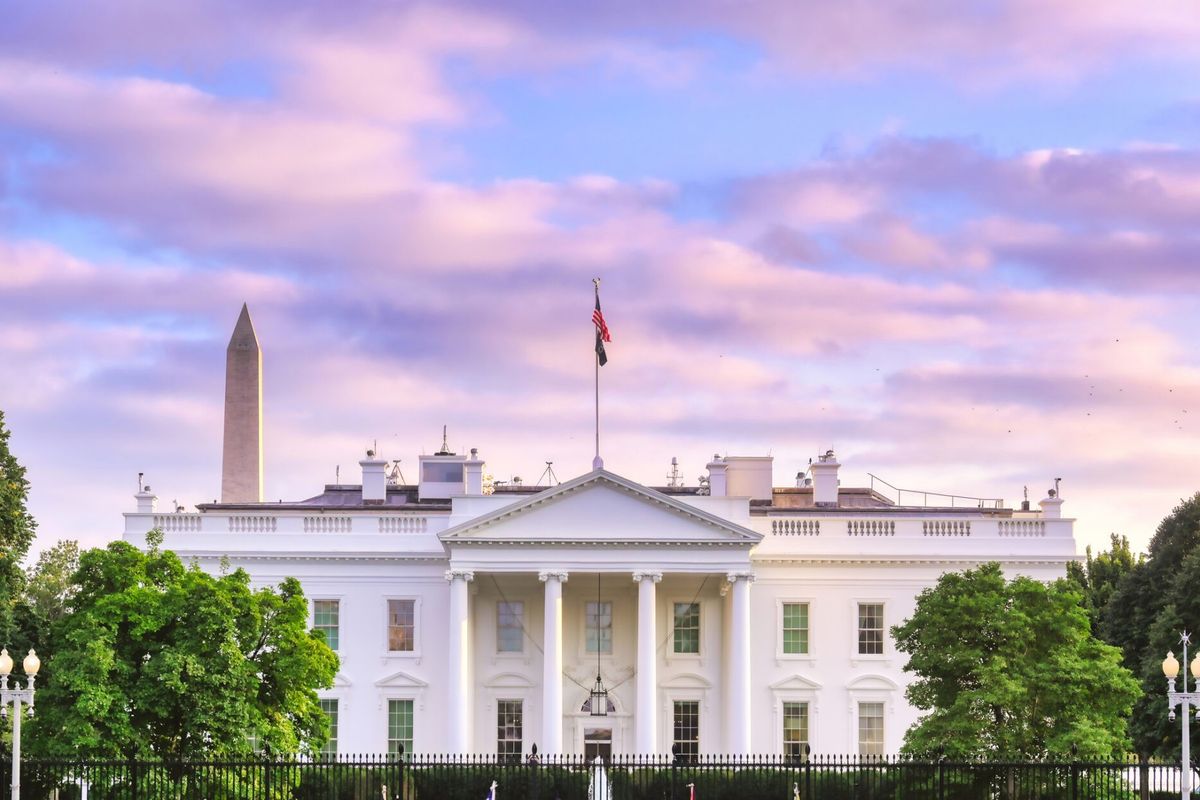SUBSCRIBER+EXCLUSIVE INTERVIEW — Deep inside a ravine on the outskirts of a western Mexican city overseen by among the world's most powerful drug cartels, 45 bags of human remains were uncovered this past week — the latest grisly event to plague America’s southern neighbor.
Such incidents in Mexico are not especially unique. But the spate of violence may have recently reached a breaking point, with Mexican president Andrés Manuel López Obrador calling for a peace agreement between his country’s largest cartels.
"I hope we achieve peace," he said during a morning news conference last week. "That’s what we all want."
Meanwhile, record increases in American deaths linked to fentanyl, a synthetic opiate that U.S. officials say Mexican cartels manufacture with precursor chemicals imported from China, is taking hold.
“If things get a little bit worse, [Mexico] is going to become a narco state,” said Mike Vigil, former Chief of International Operations for the Drug Enforcement Administration, which “obviously [impacts] the flow of more drugs into the United States.”
"The problem," Vigil added, "[is] rogue pharmaceutical and chemical [supplier] companies in China, which number in the tens of thousands. Could the Chinese bring it under control? Yes, but ... the level of control that the Chinese will exert on these pharmaceutical and chemical companies depends on the current relationship with the United States."
Relations between Washington and Beijing remain at historic lows, while both China and Mexico deny involvement in America's burgeoning drug epidemic.
THE CONTEXT
1959: Fentanyl first developed and introduced as an intravenous anesthetic.
2016: Synthetic opioids, namely fentanyl, surpasses heroin and prescription drugs as the leading type of opioid involved in U.S. overdose deaths.
2019: China officially schedules entire class of fentanyl drugs, increasing control of manufacturing and distribution of Chinese-made fentanyl. Chinese chemical and shipping companies shift to selling fentanyl precursor chemicals to Mexican drug cartels, who then are believed to produce and smuggle fentanyl into the U.S.
2021: More 100,000 drug overdose deaths are reported in the U.S., with two-thirds of fatalities involving synthetic opioids, especially illicitly-made fentanyl.
2023: Mexican President Andres Manuel Lopez Obrador says Mexico is not to blame for fentanyl overdose crisis in the U.S.
2023 China denies involvement in illegal fentanyl trafficking to Mexico, after Mexican President Andres Manuel Lopez Obrador sends a letter to Chinese President Xi Jinping, asking for help in curbing the flow of fentanyl precursors to Mexican drug cartels.
The Cipher Brief sat down with Cipher Brief Expert Michael Vigil, former Chief of International Operations for the Drug Enforcement Administration, to examine Mexico’s response to cartel violence and drug production, U.S. interdiction efforts, and the extent of Chinese involvement.
The transcript below is a portion of the full conversation and has been edited for length and clarity.
Michael Vigil, Former Chief of International Operations, DEA
Mike Vigil is the former Chief of International Operations for the Drug Enforcement Administration. He is one of the most highly decorated agents within the agency and was responsible for numerous multi-national operations, the largest involved 36 countries. He was also responsible for developing global intelligence sharing platforms. He is the author of DEAL and Metal Coffins: The Blood Alliance Cartel and Narco Queen. He is also the author of The Land of Enchantment Cartel.
The Cipher Brief: Can you help explain what’s taking shaping south of the border with regard to these drug cartels, China’s involvement, and what U.S. policymakers can do?
Vigil: There are tremendous obstacles that have to be overcome. Number one, the insatiable appetite for drugs here in the United States. Number two, China refuses to acknowledge the fact that they provide finished-made fentanyl. Massive amounts of precursor chemicals are flowing from China, primarily into Mexico, aboard maritime ships. They use the ports in the Pacific — Lazaro Cardenas [Mexico's largest seaport] in the state of Michoacan, Manzanillo [Mexico's seventh busiest seaport] in the state of Colima — and then also on the Atlantic side — the Port of Vera Cruz. These precursory chemicals can be purchased in China very inexpensively.
The Chinese, at one time, were trying to control or put fentanyl into their controlled substance list. And it was like playing whack-a-mole because they would put an analog of fentanyl into their controlled substance list. And then you had these chemical companies that would change the molecular structure of fentanyl slightly, which then required the Chinese to put that analog into their controlled substance list. It was playing whack-a-mole. Finally on May 1st, 2019, they put all fentanyl — any and all analogs — onto their controlled substance list.
The problem is that they still have rogue pharmaceutical and chemical companies in China which number in the tens of thousands. Could the Chinese bring it under control? Yes, but ... the level of control that the Chinese will exert on these pharmaceutical and chemical companies depends on the current relationship with the United States. If there's issues involved, then they exert less control. It's an ebb and flow that changes continuously.
Looking for a way to get ahead of the week in cyber and tech? Sign up for the Cyber Initiatives Group Sunday newsletter to quickly get up to speed on the biggest cyber and tech headlines and be ready for the week ahead. Sign up today.
The cartels in Mexico basically [first] dealt with the cultivation of marijuana ... and opium poppy that produced heroin. And then in the 1980s, the Colombian cartels, primarily the Medellin cartel, started to shift away from the Caribbean because of the influx of many resources from the U.S. government there. They looked for another route. They decided to go with Mexico because they had a common language. At the same time, they already had existing pipelines for heroin and marijuana into the United States that they could use for the cocaine. In the late seventies, and then in the eighties, the Mexicans got a big adrenaline shot in the arm ... and started to traffic cocaine because the appetite for cocaine was insatiable here in the United States.
Now what the cartels are doing is they focus much more on synthetic drugs. That is methamphetamine and the more deadly drug fentanyl. Fentanyl is 50 times stronger than heroin, a hundred times stronger than morphine.
It is the deadliest illegal drug crises that the United States has ever faced. And it all started back in the 1990s. There were three waves that took place. The first wave was in the nineties when you had pharmaceutical companies here in the United States that were distributing drugs like Oxycontin and others. Purdue Pharma was probably the greatest culprit, and they marketed Oxycontin as non-addictive because of its time-release formula. The Food and Drug Administration allowed it to get into the consumer market. Then in 2010, you had the second wave of the opioid crises, which was heroin. They shifted back to heroin because it was less expensive than Oxycontin and other pharmaceutical drugs. Then, fentanyl started back in about 2013, and it continues to increase. Right now, fentanyl is throughout the United States.
The principal culprits for the distribution of fentanyl is number one: Sinaloa Cartel. And then secondly, the Jalisco New Generation Cartel.
Sinaloa Cartel, obviously, is the most powerful because they came into the existence around 2009 with the demise of the Guadalajara Cartel. They currently operate in six of the seven continents around the world. They don't operate in Antarctica, because the penguins can't buy drugs. Unlike most criminal organizations, they have a horizontal structure, very much like Walmart. They have their subsidiaries, [and] authority flows along that whole organization.
Then you have the Jalisco New Generation Cartel that came into existence around the 2009. They are second in power to the Sinaloa Cartel. They operate very much like a paramilitary. They take steel plates that they put on trucks to make them virtual tanks, and then they mount 50 caliber machine guns on there. And they're hyper violent — the most violent organization that currently exist in Mexico.
The Jalisco New Generation Cartel is also producing fentanyl and focuses on the metropolitan areas like Los Angeles, Houston, Miami, New York, Chicago, but they have also started to move into rural areas across the United States, like in West Virginia. Why? Because it's untapped. It's an untapped market in those areas. And why did they go into synthetic drugs? They’ve started to move away from plant-based drugs simply because there's a great risk that the eradication efforts will destroy those crops. It also costs them a few pennies per pill of fentanyl to make.
You hear people talking about super labs, super fentanyl labs in Mexico. I think it creates a very poor reality because they're not super labs. The labs in Mexico consist of a metal pump used to mix chemicals, and then they use even a shovel to mix them. They use tableting machines that they either get in Mexico [or] China. Then they make it into counterfeit pills like Oxycodone. And you've seen those blue pills that have the initial M on one side and then on the other side 30 to kind of mimic Oxycodone. But they also manufacture them to look like Percocet, Xanax. The people here in the United States that buy these drugs think that they're using something else other than fentanyl.
Additionally, the Mexican cartels are mixing fentanyl with other drugs. They mix fentanyl into marijuana, heroin, methamphetamine, cocaine, because the user gets a bigger high, a more prolonged high. And the epicenter for the movement of fentanyl into the United States is Imperial and San Diego counties in Southern California. That's the epicenter. And why is because you have the Tijuana, San Diego port of entry, and it's the busiest one in the United States easily. There's 70,000 vehicles that cross over into the United States every day. There's about 20,000 people, pedestrians that come across. That's on a daily basis. I would say 40% of the entire population along the US-Mexico border resides in that area — San Diego, Southern part of San Diego, Imperial Counties, Tijuana, [and] Mexicali. And then you have 40 million people in California, and then there are major interstates in California where that drug can be taken to other parts of the United States. All of the states across the United States now are awash with this drug, fentanyl.
The Cipher Brief: Is it reaching a point now, between allegations of government complicity and growing cartel influence, where there are no clear dividing lines in terms of who's combating who?
Vigil: There are no clear lines. And the fact of the matter is that historically Mexico has always touted their military as the most prestigious institution in Mexico. They tout them as being incorruptible, which is not the case, especially when you take a look at the case of Gutierrez Rebollo and other generals that have gone to prison because of corruption and protecting drug trafficking cartels. And then in October of 2020, Salvadore Cienfuegos, the former Minister of Defense under the Pena Nieto regime from 2012 to 2018, was arrested in the United States. And then [former US attorney general] Bill Barr and [former President] Trump decided to kick him back to Mexico with the promise of that Mexico would investigate him. Well, they didn't investigate him, and that created a massive problem because once he was returned, they eventually released them.
Have you reserved your seat at the table for The Cipher Brief Threat Conference?
Space is limited. Apply today.
And then you had the Mexican president, accusing the DEA, falsifying the evidence against Cinefuegos. He then passed legislation within the Mexican Congress to limit not only the DEA's operations in Mexico, but every other US agency as well — the FBI, ATF, Homeland Security. And the restrictions were that they could not do anything other than stay in their office and provide nothing more than information to Mexico. Because of endemic corruption, if you pass information that could easily compromise informants, agents, operations and investigations.
Secondly, they took away all diplomatic immunity from these agencies, putting them in a predicament, especially when operating in a very violent Mexico, where the cartels hold sway and control large swaths of territory.
The third thing that they did is they required that any Mexican official that had contact with the US agency that they had to write a report. Many times you have 10, 20 conversations during the day. These guys aren't going to want to spend all their time writing reports. Therefore, they're not going to take your calls. And that is going to have a highly negative impact on practical operations. Let's say for example, you have information of a suspect aircraft coming from Columbia to the southern part of Mexico, and you can't get ahold of anybody. Well, you're not going to be able to do anything.
Then the other thing that also happened is when Lopez Obrador became president in 2018, he passed the policy of abrazos no balazos, which means hugs and not gunshots. And he on the fact that he was going to put the military back in the barracks where they belonged, but he did the exact opposite. He created the National Guard. Now the military is in charge of organized crime. They were in charge of a pandemic. They're in charge of migration, immigration, they're in charge of the seaports, they're in charge of construction, they're in charge of everything. And the lines are very blurred right now. You still have some of the police departments that work. But they're highly corrupt, especially at the state and municipal levels. The military is ill-trained. The Mexican government for many, many years, has only had a success rate of about 5% in its criminal prosecutions at the federal level. And it's probably worse than that at the state and local levels. It's become very problematic.
The Cipher Brief: I spent a good amount of time in 2011 in Afghanistan. And then after that, I spent a good amount of time in Michoacan. I've never been to a place that reminded me so much of Afghanistan as the Mexican state of Michoacan. Why is that?
Vigil: Michoacan is a major battleground. Why? Because the cartels have started to penetrate the legitimate industry. Michoacan is important for many reasons, the port of Lazaro Cardenas for the flow of precursor chemicals. Michoacan is the only state that can import avocados to the United States. Now, the avocado industry in Mexico is a $3.5 billion a year industry, and the Jalisco New Generation Cartel has penetrated that organization. They're [also] doing illegal mining. The Sinaloa Cartel has penetrated the fishing industry. Mexico currently has six petroleum refineries. They're in the process of a seventh one in the state of the Tabasco. But they're stealing ... from these pipelines and these refineries. The cartels have become even more resilient.
Now you have Lopez Obrador saying that they don't produce fentanyl in Mexico, which is totally contrary to the existing evidence. But it sends a message that if he's denying that they produce fentanyl, it means that he's not going to attack it. And he is really doing even less cause of this.
Both sides of the relationship between Mexico and the United States are severely damaged in terms of bilateral efforts to combat drugs. Lopez Obrador has about another year, and I can assure you that the flow of fentanyl and other drugs is going to continue to flood the United States because he's not going to do anything with all these threats.
The other problem that we have is that the Republicans that don't want to pass legislation to effectively control weapons here in the United States. And 75% to 90% of the weapons that you find in of the cartels come from the United States. Mexico only has one gun store and it's near Mexico City on a military base. The weapons that the cartels use [are] military grade weapons, rocket propelled grenades. In 2015, they knocked down a military helicopter with an RPG.
The weaponry has given them a lot of firepower and they're not afraid of confronting Mexico's security forces. And we've seen that many times where, for example, in the first capture of [Mexican drug lord] Ovidio where the National Guard went into [the city of] Culiacan, they arrested him and then they had to release him because the cartel immediately had created a reaction. They went in there with trucks, 50 caliber machine guns mounted on them, and surrounded the group of National Guard. They had release him, which was a major slap in the face of Mexico. And then now they captured him again and also created a huge force where they were shooting a commercial and military aircraft landing at the airport. [The cartels] operate with greater effectiveness really. When I worked in Mexico, the traffickers had tremendous fear of the Mexican federal judicial police and also of the military. And now that is no longer the case.
The Cipher Brief: Where do we stand in terms of past defense intelligence agency analysis that suggested Mexico was edging toward potential failed state status?
Vigil: I think that Mexico is pretty close to that. But I would say that if things get a little bit worse, it's going to become a narco state. And the thing is that with the policy of non-confrontation by Lopez Obrador only allowed the cartels to operate with greater impunity and total lack of respect for the rule of law. And I've seen videos, for example, of cartel convoys passing right in on the road in front of a military garrison. And the soldiers will just watch that as it passes by. They will not confront. They have started a huge anaconda to choke the lifeline of Mexico.
Obviously, with the flow of more drugs into the United States, there will be more violence here in the United States, simply because drug trafficking and violence go hand in glove. And so that's why we need to do a better job here in the United States because when we take a look at these source countries or transit countries, we can't really rely on them a lot. You make 10 steps forward, and then another individual takes power and they don't want to deal with counter drug efforts, or they get slighted by US politicians, so then you take 10 steps backward. We need to have more of focus here in the United States, and that is basically to reduce the demand.
We also need to do a better job in terms of treatment, because now a lot of these treatment facilities will detox drug addicts, but then there's no follow up. They release, they go back to the same neighborhoods, the same people that got them addicted, and they're addicted within two weeks. And then we also need to do a better job in terms of the distribution of test strips and harm reduction so that the addicts can test and make sure that there's no fentanyl in their drug of choice. And also more naloxone, which can reverse opioid overdoses. There's a lot of things that we really need to provide more focus on, and especially at reducing the demand. And the thing that I would recommend is to incorporate it into the curriculum of the schools. We should start educating the kids [about this] at a very early age.
The Cipher Brief: When we talk about the financing of some of these cartels, there are reports of money laundering schemes coming out of China. How much influence do these China-based groups have?
Vigil: Chinese launderers are laundering money for the cartels. Yes, it happens, but I think that that is over exaggerated. The cartels are a very suspicious lot. These guys suffer from severe paranoia. They’re not going to really trust the Chinese to not steal their money. Having the money, for example, in Chinese financial institutions is not going to make them feel comfortable. Actually, they really don't need them that much because a lot of times they have people that are capable of putting that into US financial institutions.
The other thing also is that what they do is they will buy commodities. It's called commodity laundering. For example, they go into the clothing industry and in Los Angeles buy things there. They can buy tractors because Mexico is highly agricultural. And then pay customs officials to let them go through in the markets in Mexico and get pesos. Right then and there, you have effective money laundering going from U.S. dollars to Mexican pesos. They also buy properties. They buy land. They buy mansions. There’s many ways that they can launder it. They have a ton of mechanisms to launder money to include some of their attorneys to develop shell corporations, which are illegal. But it's very difficult to ascertain the identity of the people that have those shell or the people that hold those shell corporations. It's very interesting.
When you take a look at the Colombian cartels that existed, the Medellin Cartel under Pablo Escobar, the Cali Cartel under Miguel and Gilberto Rodriguez Orejuela. That were considered extraordinarily powerful. And then when you take a look at them now, in comparison to the cartels in Mexico, they were little choir boys.
[And] you have a lot of countries that where you have leftist leaning presidents or prime ministers, whatever, and they engage in this corruption and with drug trafficking. It's a major problem. And that's why I said that we can't rely on a lot on these countries because a leader comes in that's highly corrupt or doesn't like the United States. Whatever progress you made, they destroy. Go back to square one and the drugs continue to flow. That's why we need to concentrate on the demand reduction and things here that we can control.
Read more expert-driven national security insights, perspectives and analysis in The Cipher Brief because National Security is Everyone’s Business














